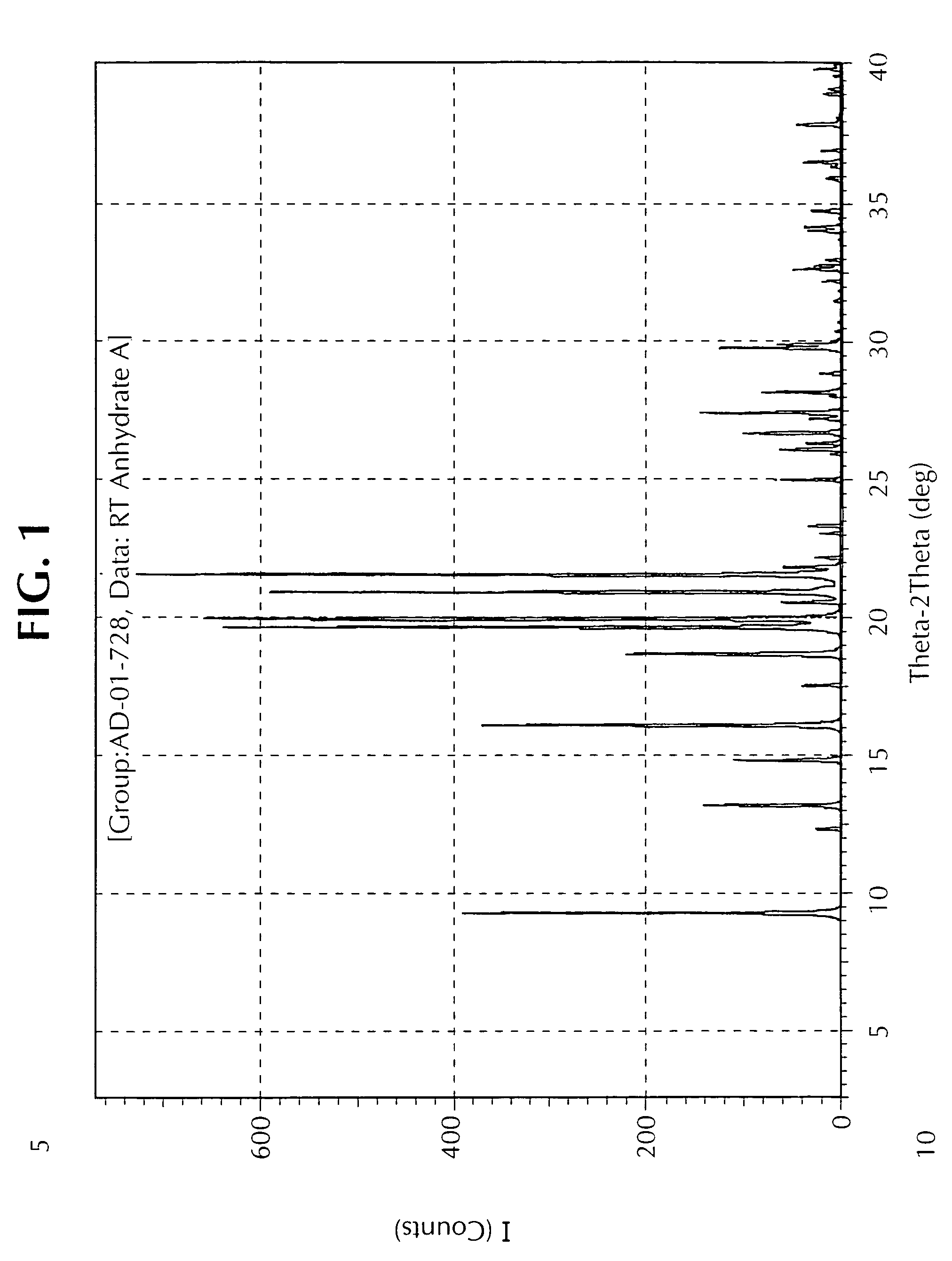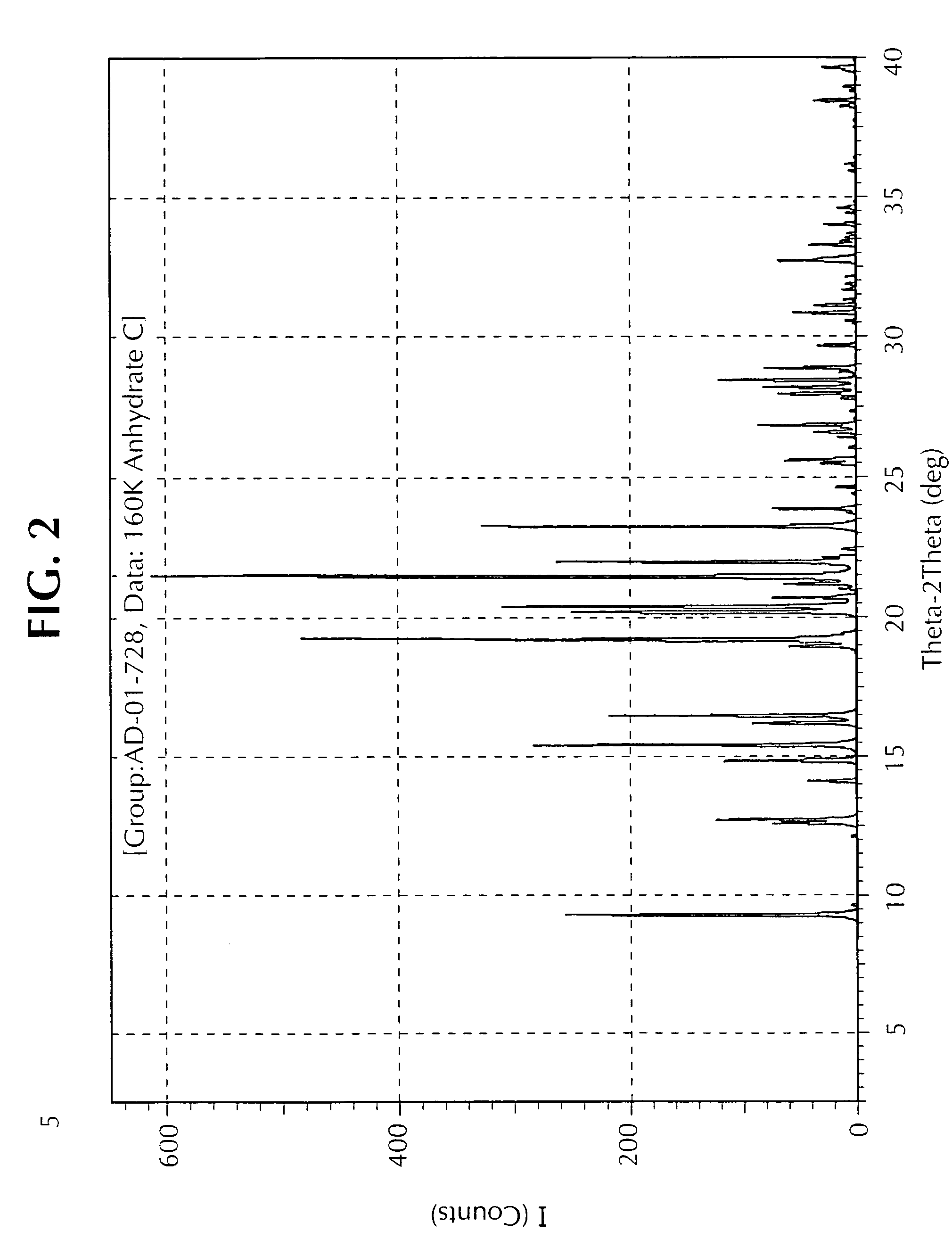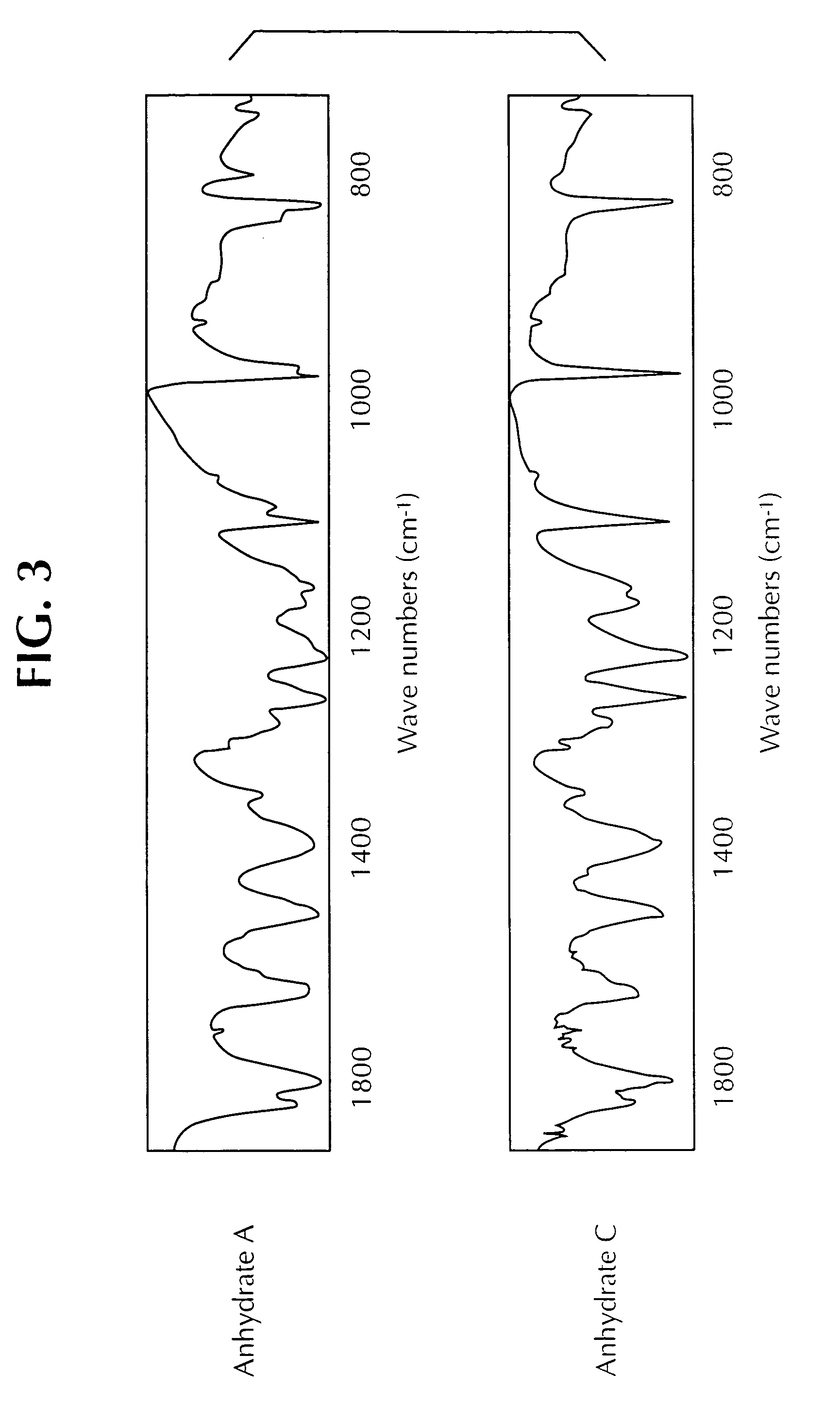Depigmenting agents
a technology pigmentation agent, which is applied in the field of crystalline forms of anhydrous 4cyclopentyl resorcinol, can solve the problems of difficult separation of 4-cyclopentyl resorcinol from its positional isomers, unsatisfactory pigmentation patterns, etc., and achieves the effect of lightening the skin
- Summary
- Abstract
- Description
- Claims
- Application Information
AI Technical Summary
Problems solved by technology
Method used
Image
Examples
example i
[0070]This Example illustrates one alternative method for the preparation of the Form A polymorph. A flask is charged with resorcinol (400 g, 3.63 mmol), cyclopentanol (312 g, 3.63 mmol) and phosphoric acid (85% in water, 1307 ml). The mixture is heated with nitrogen purge to 120° C. for 24 hrs. The solution is cooled to 100° C. and water (800 ml) is added. The solution is cooled to 60° C. and ethyl acetate (800 ml) is added. The solution is stirred for 10 minutes and transferred to a separating funnel. The aqueous layer is separated and is extracted with ethyl acetate (800 ml). The organic phases may be combined and washed with water (2×750 ml). The ethyl acetate is removed under vacuum at 40-50° C. to leave a purple oil.
[0071]The material is distilled under reduced pressure (1 mbar) at a pot temperature of 168 to 182° C. and vapour temperature of 164 to 166° C. Recrystallisation of the combined fractions (toluene-heptane) affords Anhydrate A.
example ii
[0072]A round bottom flask equipped with stirrer bar was charged with resorcinol (150 g, 1.36 moles), cyclopentanol (125 ml, 1.38 moles) and phosphoric acid (85% in water) 500 ml. The flask was fitted with a reflux condenser, purged with nitrogen and the mixture heated at 120° C. (oil bath temperature) for 26 h. After this time, TLC analysis indicated that starting resorcinol was still present. Further cyclopentanol (25 ml, 0.28 moles) was added to the reaction mixture and heating continued for 2.5 hours. On cooling, the mixture was diluted with water (500 ml) and ethyl acetate (600 ml). The organic layer was separated, and the aqueous layer extracted with ethyl acetate (3×500 ml). The combined organic layers were neutralized by careful addition of an excess of saturated aqueous sodium hydrogen carbonate solution, washed with brine (300 ml), dried (magnesium sulfate) and concentrated. The residue was dissolved in toluene (500 ml) and water (20 ml, 1.11 moles, 0.8 eq) added. The solu...
example iii
[0073]This example illustrates one method for the preparation of the Form C polymorph. Anhydrate C was obtained via vapour adsorption crystallisation of Anhydrate A utilizing toluene (solvent) and pentane (anti-solvent) over a period of three days to yield the product as dendritic crystals, MPt 63.2-66.5° C. Selected IR Data (υmax / cm−1): 1108.4 s, 977.9 s, 931.8 w, 826.8 s, 749.1 s and 628.0 m.
PUM
| Property | Measurement | Unit |
|---|---|---|
| temperature | aaaaa | aaaaa |
| melting point | aaaaa | aaaaa |
| melting point | aaaaa | aaaaa |
Abstract
Description
Claims
Application Information
 Login to View More
Login to View More - R&D
- Intellectual Property
- Life Sciences
- Materials
- Tech Scout
- Unparalleled Data Quality
- Higher Quality Content
- 60% Fewer Hallucinations
Browse by: Latest US Patents, China's latest patents, Technical Efficacy Thesaurus, Application Domain, Technology Topic, Popular Technical Reports.
© 2025 PatSnap. All rights reserved.Legal|Privacy policy|Modern Slavery Act Transparency Statement|Sitemap|About US| Contact US: help@patsnap.com



